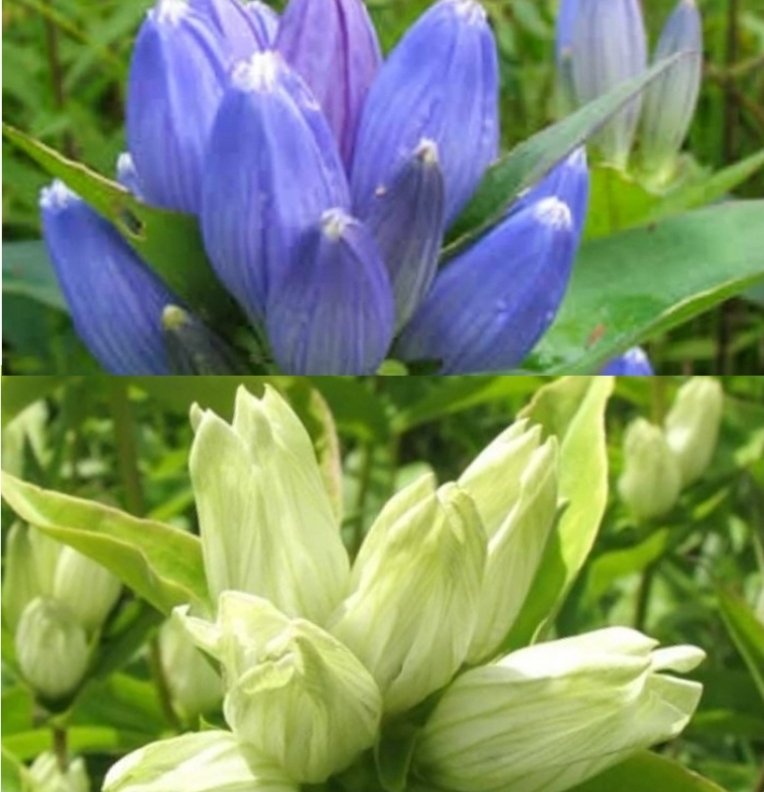 Image 1 of 6
Image 1 of 6

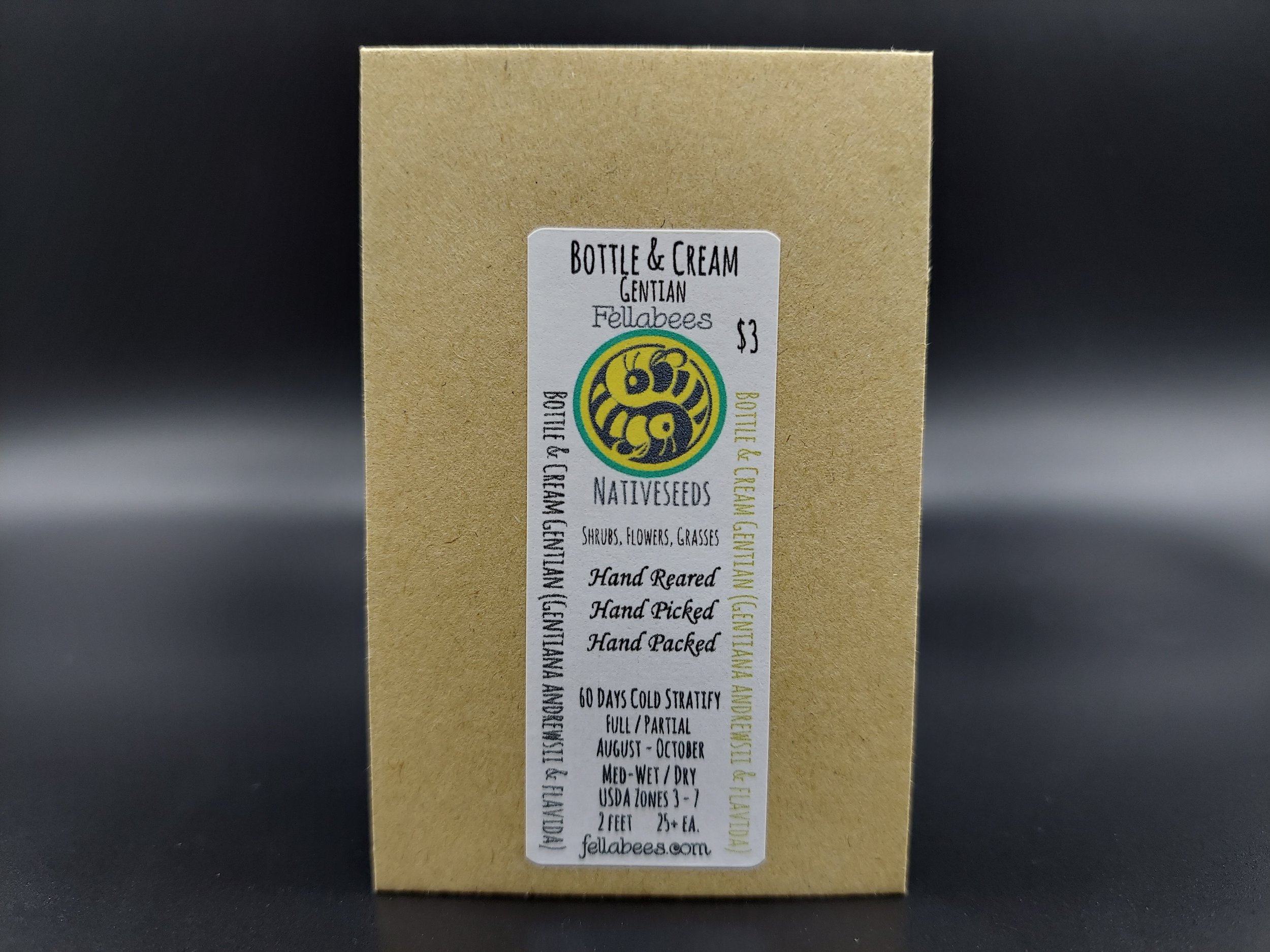 Image 2 of 6
Image 2 of 6

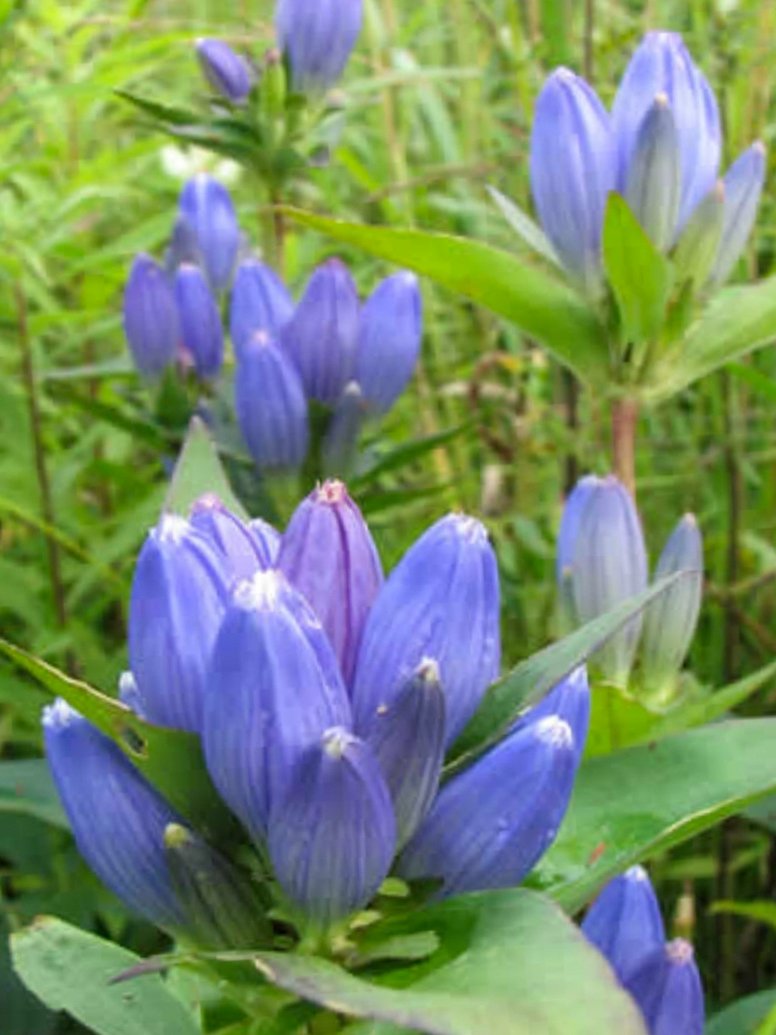 Image 3 of 6
Image 3 of 6

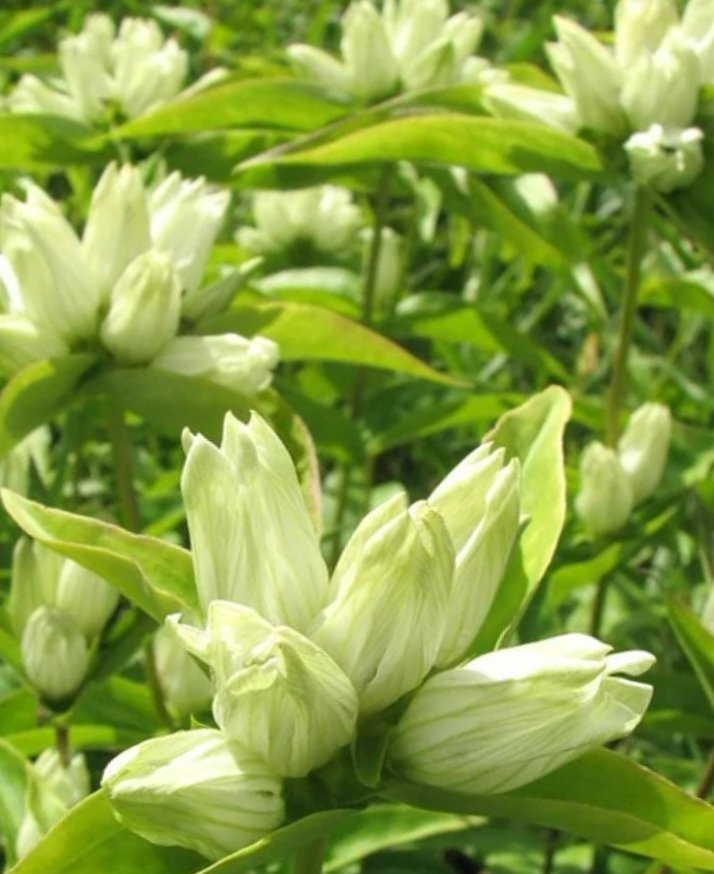 Image 4 of 6
Image 4 of 6

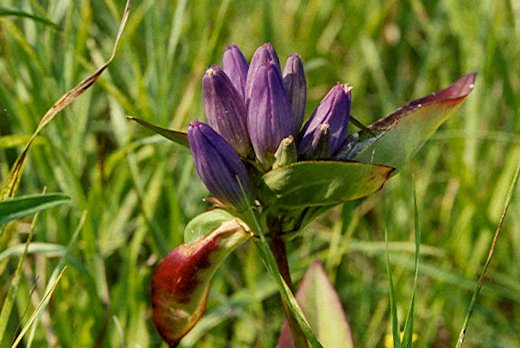 Image 5 of 6
Image 5 of 6

 Image 6 of 6
Image 6 of 6







Bottle & Cream Gentian Mix (Gentiana andrewsii & flavida)
Bottle & Cream Gentian Mix (Gentiana andrewsii & flavida)
Bottle Gentain Mix (Gentiana andrewsii & flavida)
Gentian is a species native to North America from Manitoba through Ontario in the north, south to Oklahoma, Arkansas and North Carolina, and it is listed as rare, endangered, threatened or extirpated (rooted out and destroyed) completely in parts of this range.
When the two natives bloom within weeks of the other they can naturally hybridize. Producing a more upright growing, but still native variation, yielding white flowers with blue edges.
Gentiana andrewsii, more commonly called Bottle Gentian, Closed Gentian, or Closed Bottle Gentian, is an herbaceous species of flowering plant in the Gentianaceae Family. Gentiana andrewsii is native to northeastern North America, from the Dakotas to the East Coast and through eastern Canada.
Closed bottle gentian occurs in wet to dry-mesic prairies and prairie fens, primarily in loamy soils, but it can also be found in sandy areas, such as near the Great Lakes shorelines.
The closed flowers make entrance to feed on pollen or nectar difficult for many species of insects. Those who are strong enough to enter through the top of the flower include the digger bee species (Anthophora terminalis) and the bumblebee species (Bombus fervidus), (Bombus griseocollis), and (Bombus impatiens). The eastern carpenter bee (Xylocopa virginica) chews a narrow slit at the base of the flower and "steals" nectar without pollinating the plant, a behavior known as nectar robbing.
The holes in the petals created by this species allow smaller insects to also access the nectar and pollen, including the honeybee (Apis mellifera), the green sweat bee species (Augochlorella aurata) and (Augochlorella persimilis), and the eastern masked bee (Hylaeus affinis).
All of the above information holds true (with slight differences) from:
Gentiana flavida more commonly called Plain, Pale, White, Yellow, or Cream Gentian, is an herbaceous species of flowering plant, also of the Gentianaceae family. Cream Gentian has yellowish-white colored flowers that erupt from sets of stems rising from it's thick white taproots. It is native to North America from Manitoba through Ontario in the north, south to Oklahoma, Arkansas and North Carolina
This species resembles Bottle Gentian (Gentiana andrewsii), which has blue flowers and a less upright habit, and shares much of the same range. Gentiana flavida starts to bloom a few weeks earlier than Bottle Gentian and the flowers are more open at the tops. Gentiana flavida can also hybridize with Gentiana andrewsii, producing upright growing plants having white flowers with blue edges.
Plant Details for Blue Bottle Gentian: (Gentiana andrewsii):
USDA Zones: 3-6
Germination Needs: 60 Day Cold Stratification
Life Cycle: Perennial
Sun Exposure: Full to Partial
Soil Moisture: Medium-Wet, Medium
Plant Spacing: 1-2 feet
Height: 2 feet
Bloom Time: August, September, October
Bloom Color: Blue
Advantages
Pollinator Favorite: butterflies, moths, bees, wasps, beetles
Deer Resistant: Yes
Excellent in the home landscape!
Plant Details for Cream Gentian: (Gentiana flavida):
USDA Zones: 4-7
Germination Needs: 60 Day Cold Stratification
Life Cycle: Perennial
Sun Exposure: Full to Partial
Soil Moisture: Medium-Wet, Medium, Medium-Dry, Dry
Plant Spacing: 1-2 feet
Height: 3 feet
Bloom Time: August, September
Bloom Color: Cream
Advantages
Pollinator Favorite: butterflies, moths, bees, wasps, beetles
Deer Resistant: Yes
Excellent in the home landscape!
Bottle & Cream Gentian Mix (Gentiana andrewsii & flavida)
Bottle Gentain Mix (Gentiana andrewsii & flavida)
Gentian is a species native to North America from Manitoba through Ontario in the north, south to Oklahoma, Arkansas and North Carolina, and it is listed as rare, endangered, threatened or extirpated (rooted out and destroyed) completely in parts of this range.
When the two natives bloom within weeks of the other they can naturally hybridize. Producing a more upright growing, but still native variation, yielding white flowers with blue edges.
Gentiana andrewsii, more commonly called Bottle Gentian, Closed Gentian, or Closed Bottle Gentian, is an herbaceous species of flowering plant in the Gentianaceae Family. Gentiana andrewsii is native to northeastern North America, from the Dakotas to the East Coast and through eastern Canada.
Closed bottle gentian occurs in wet to dry-mesic prairies and prairie fens, primarily in loamy soils, but it can also be found in sandy areas, such as near the Great Lakes shorelines.
The closed flowers make entrance to feed on pollen or nectar difficult for many species of insects. Those who are strong enough to enter through the top of the flower include the digger bee species (Anthophora terminalis) and the bumblebee species (Bombus fervidus), (Bombus griseocollis), and (Bombus impatiens). The eastern carpenter bee (Xylocopa virginica) chews a narrow slit at the base of the flower and "steals" nectar without pollinating the plant, a behavior known as nectar robbing.
The holes in the petals created by this species allow smaller insects to also access the nectar and pollen, including the honeybee (Apis mellifera), the green sweat bee species (Augochlorella aurata) and (Augochlorella persimilis), and the eastern masked bee (Hylaeus affinis).
All of the above information holds true (with slight differences) from:
Gentiana flavida more commonly called Plain, Pale, White, Yellow, or Cream Gentian, is an herbaceous species of flowering plant, also of the Gentianaceae family. Cream Gentian has yellowish-white colored flowers that erupt from sets of stems rising from it's thick white taproots. It is native to North America from Manitoba through Ontario in the north, south to Oklahoma, Arkansas and North Carolina
This species resembles Bottle Gentian (Gentiana andrewsii), which has blue flowers and a less upright habit, and shares much of the same range. Gentiana flavida starts to bloom a few weeks earlier than Bottle Gentian and the flowers are more open at the tops. Gentiana flavida can also hybridize with Gentiana andrewsii, producing upright growing plants having white flowers with blue edges.
Plant Details for Blue Bottle Gentian: (Gentiana andrewsii):
USDA Zones: 3-6
Germination Needs: 60 Day Cold Stratification
Life Cycle: Perennial
Sun Exposure: Full to Partial
Soil Moisture: Medium-Wet, Medium
Plant Spacing: 1-2 feet
Height: 2 feet
Bloom Time: August, September, October
Bloom Color: Blue
Advantages
Pollinator Favorite: butterflies, moths, bees, wasps, beetles
Deer Resistant: Yes
Excellent in the home landscape!
Plant Details for Cream Gentian: (Gentiana flavida):
USDA Zones: 4-7
Germination Needs: 60 Day Cold Stratification
Life Cycle: Perennial
Sun Exposure: Full to Partial
Soil Moisture: Medium-Wet, Medium, Medium-Dry, Dry
Plant Spacing: 1-2 feet
Height: 3 feet
Bloom Time: August, September
Bloom Color: Cream
Advantages
Pollinator Favorite: butterflies, moths, bees, wasps, beetles
Deer Resistant: Yes
Excellent in the home landscape!
Bottle & Cream Gentian Mix (Gentiana andrewsii & flavida)
Bottle Gentain Mix (Gentiana andrewsii & flavida)
Gentian is a species native to North America from Manitoba through Ontario in the north, south to Oklahoma, Arkansas and North Carolina, and it is listed as rare, endangered, threatened or extirpated (rooted out and destroyed) completely in parts of this range.
When the two natives bloom within weeks of the other they can naturally hybridize. Producing a more upright growing, but still native variation, yielding white flowers with blue edges.
Gentiana andrewsii, more commonly called Bottle Gentian, Closed Gentian, or Closed Bottle Gentian, is an herbaceous species of flowering plant in the Gentianaceae Family. Gentiana andrewsii is native to northeastern North America, from the Dakotas to the East Coast and through eastern Canada.
Closed bottle gentian occurs in wet to dry-mesic prairies and prairie fens, primarily in loamy soils, but it can also be found in sandy areas, such as near the Great Lakes shorelines.
The closed flowers make entrance to feed on pollen or nectar difficult for many species of insects. Those who are strong enough to enter through the top of the flower include the digger bee species (Anthophora terminalis) and the bumblebee species (Bombus fervidus), (Bombus griseocollis), and (Bombus impatiens). The eastern carpenter bee (Xylocopa virginica) chews a narrow slit at the base of the flower and "steals" nectar without pollinating the plant, a behavior known as nectar robbing.
The holes in the petals created by this species allow smaller insects to also access the nectar and pollen, including the honeybee (Apis mellifera), the green sweat bee species (Augochlorella aurata) and (Augochlorella persimilis), and the eastern masked bee (Hylaeus affinis).
All of the above information holds true (with slight differences) from:
Gentiana flavida more commonly called Plain, Pale, White, Yellow, or Cream Gentian, is an herbaceous species of flowering plant, also of the Gentianaceae family. Cream Gentian has yellowish-white colored flowers that erupt from sets of stems rising from it's thick white taproots. It is native to North America from Manitoba through Ontario in the north, south to Oklahoma, Arkansas and North Carolina
This species resembles Bottle Gentian (Gentiana andrewsii), which has blue flowers and a less upright habit, and shares much of the same range. Gentiana flavida starts to bloom a few weeks earlier than Bottle Gentian and the flowers are more open at the tops. Gentiana flavida can also hybridize with Gentiana andrewsii, producing upright growing plants having white flowers with blue edges.
Plant Details for Blue Bottle Gentian: (Gentiana andrewsii):
USDA Zones: 3-6
Germination Needs: 60 Day Cold Stratification
Life Cycle: Perennial
Sun Exposure: Full to Partial
Soil Moisture: Medium-Wet, Medium
Plant Spacing: 1-2 feet
Height: 2 feet
Bloom Time: August, September, October
Bloom Color: Blue
Advantages
Pollinator Favorite: butterflies, moths, bees, wasps, beetles
Deer Resistant: Yes
Excellent in the home landscape!
Plant Details for Cream Gentian: (Gentiana flavida):
USDA Zones: 4-7
Germination Needs: 60 Day Cold Stratification
Life Cycle: Perennial
Sun Exposure: Full to Partial
Soil Moisture: Medium-Wet, Medium, Medium-Dry, Dry
Plant Spacing: 1-2 feet
Height: 3 feet
Bloom Time: August, September
Bloom Color: Cream
Advantages
Pollinator Favorite: butterflies, moths, bees, wasps, beetles
Deer Resistant: Yes
Excellent in the home landscape!
